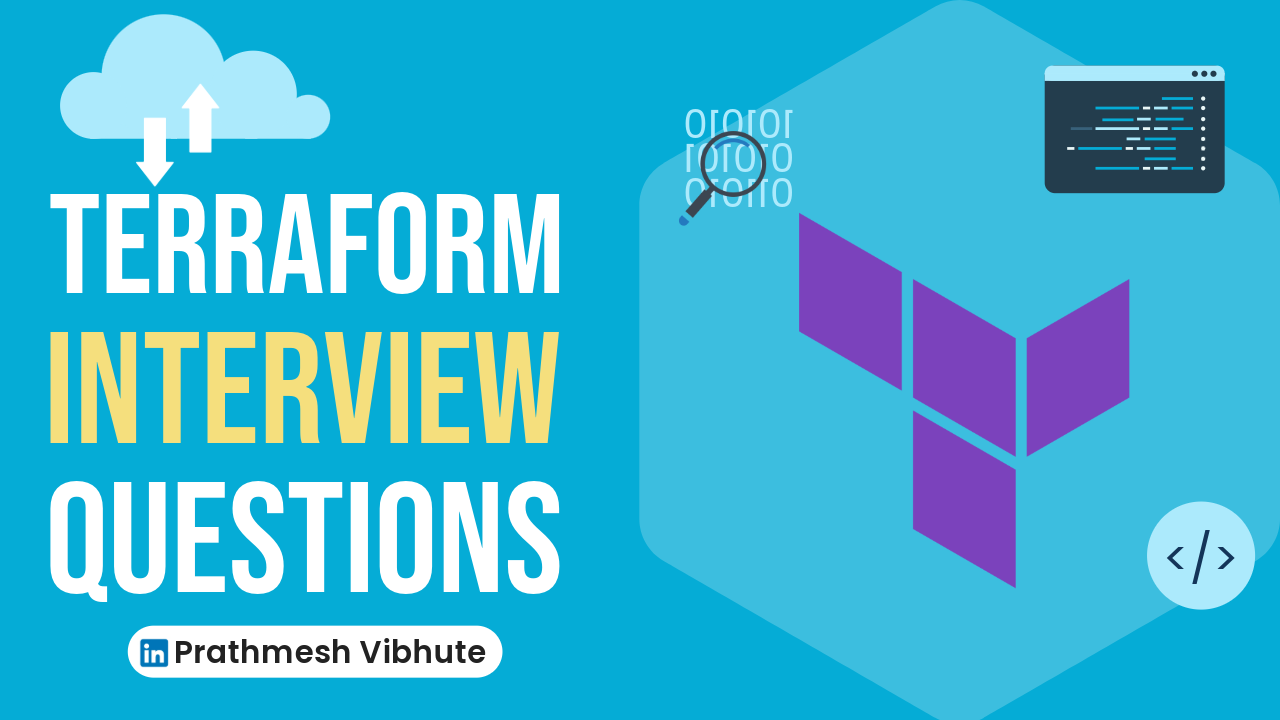Day 71 : Let's prepare for some interview questions of Terraform 🔥
 Prathmesh Vibhute
Prathmesh Vibhute
Are you gearing up for an interview where Terraform skills are a must? Whether you're new to Terraform or looking to deepen your understanding, let's dive into some common interview questions and how to tackle them effectively.
1. What is Terraform and how is it different from other IaC tools?
Terraform is an Infrastructure as Code (IaC) tool that allows you to define and manage your infrastructure in a declarative manner using configuration files. What sets Terraform apart is its ability to support multiple cloud providers, on-premises infrastructure, and even third-party services. Unlike other IaC tools that might be limited to specific platforms, Terraform's versatility makes it a popular choice among DevOps and infrastructure engineers.
2. How do you call a main.tf module?
To call a main.tf module in Terraform, you can use the module block in your configuration files. For example:
module "example" {
source = "./path/to/main.tf"
// other configuration options
}
3. What exactly is Sentinel, and can you provide a few examples of where we can use Sentinel policies?
Sentinel is a policy as code framework integrated with Terraform Enterprise. It allows you to define and enforce policies for infrastructure as code deployments. Examples of Sentinel policies include enforcing naming conventions for resources, setting budget limits, and ensuring compliance with security standards such as requiring encryption for certain resources.
4. How would you modify a Terraform configuration file to create multiple instances of the same resource?
To create multiple instances of the same resource in Terraform, you can use a count parameter within the resource block. For example:
resource "aws_instance" "example" {
count = 3
// other configuration options
}
This will create three instances of the AWS EC2 instance resource named "example."
5. Enabling debug messages in Terraform to find out from which paths Terraform is loading providers referenced in your configuration can be done by setting the environment variable:
The correct answer is A. Set the environment variable TF_LOG=TRACE.
6. How would you save a particular resource while destroying the complete infrastructure using terraform destroy?
To save a particular resource while destroying the complete infrastructure, you can use Terraform's -target flag. For example:
terraform destroy -target=resource_type.resource_name
7. Which module is used to store the .tfstate file in S3?
The terraform-backend-s3 module is commonly used to store the .tfstate file in an S3 bucket.
8. How do you manage sensitive data in Terraform, such as API keys or passwords?
Sensitive data in Terraform can be managed using environment variables, encrypted variables, or external secret management tools like HashiCorp Vault or AWS Secrets Manager.
9. What resources would you use to provision an S3 bucket and a user with read and write access to the bucket in Terraform?
To accomplish this in Terraform, you would use the aws_s3_bucket resource for the S3 bucket and the aws_iam_user and aws_iam_user_policy resources to create a user with the desired permissions.
10. Who maintains Terraform providers?
Terraform providers are maintained by the respective cloud providers or third-party contributors. For example, AWS maintains the AWS provider for Terraform.
11. How can we export data from one module to another in Terraform?
Data can be exported from one module to another in Terraform using output variables. By defining output variables in a module, you can reference and use those outputs in other modules or configurations.
Mastering these Terraform interview questions will not only showcase your expertise but also demonstrate your ability to design and manage infrastructure efficiently using Infrastructure as Code principles. Happy coding!
I'm confident that this article will prove to be valuable, helping you discover new insights and learn something enriching .
thank you : )
Subscribe to my newsletter
Read articles from Prathmesh Vibhute directly inside your inbox. Subscribe to the newsletter, and don't miss out.
Written by
